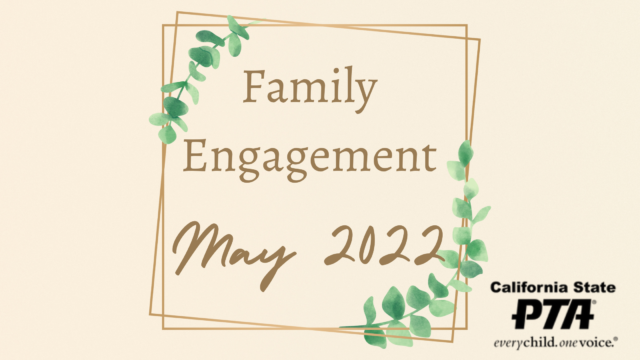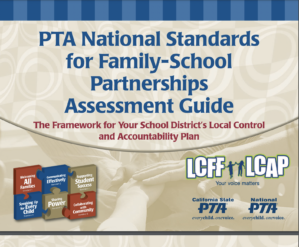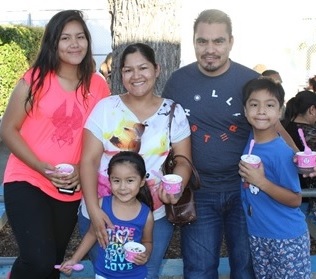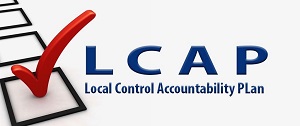 By Kathleen Fay, California State PTA Family Engagement Commission Consultant
By Kathleen Fay, California State PTA Family Engagement Commission Consultant
Springtime brings warmer weather, a week off, and preparations for the future. As school districts tackle budget planning to get ready for the next school year, families are a critical part of that decision-making process.
Thanks to legislation sponsored by California State PTA and included in California law in 2018, districts are also required to report on their meaningful Family Engagement efforts as part of the Local Control Funding Formula (LCFF). This article briefly explains what the LCFF is and how it obliges school districts to reach out to parents and families for their input in decision-making and to strengthen participation in the education process.
LCFF Overview
The Local Control Funding Formula (LCFF) is hallmark legislation that fundamentally changed how all local educational agencies (LEAs – usually school districts) in the state are funded, how they are held accountable for the services and supports they provide to enable all students to succeed to their greatest potential, and the assistance they receive from the state of California to do so. At the state level, these are the key components and their function:
- Inform: The California Accountability Model and School Dashboard provides the community, including families, with information about how LEAs and schools are meeting the needs of California’s diverse student population based on a concise set of measures.
- Assist: LCFF Support and Assistance is offered to local educational agencies at the level that they need – either general resources and assistance, differentiated assistance, or intensive intervention.
- Plan: The Local Control and Accountability Plan (LCAP) is a tool for LEAs to use to set goals, plan actions, and leverage resources to meet those goals to improve student outcomes. LEAs must explicitly address the needs of consistently low-performing student groups as well as low-performing schools within the LEA.
- Fund: Schools are funded through a combination of local property taxes and state funding. The LCFF is the primary source of an LEA’s general-purpose funding. Funds are also allocated for Special Education and several other programs. The “Principal Apportionment” is a series of calculations that adjust the flow of state funds throughout the fiscal year as further information becomes known. (Click here for more information.)
California’s Education Priorities
The way that a school district plans to spend its funds to achieve its goals is documented in its Local Control and Accountability Plan (LCAP). The governing board of each school district adopts their LCAP to be effective for three years, updated annually, to address these California education priorities:
- Conditions of Learning – Basic Services, Implementation of State Standards, and Course Access
- Pupil Outcomes – Student Achievement and Student Outcomes
- Engagement – Parent Involvement, Student Engagement, and School Climate
Note: County Offices of Education also address the needs of Expelled Pupils and Foster Youth.
(For further details, click here.)
Parent Involvement: A State Priority
Every school district’s local control and accountability plan (LCAP) must address Parent Involvement as a state priority. In California Law, Education Code (52060) states:
(3) (A) Parental involvement and family engagement, including efforts the school district makes to seek parent input in making decisions for the school district and each individual school site, and including how the school district will promote parental participation in programs for unduplicated pupils* and individuals with exceptional needs.
| * “Unduplicated pupils” are counted only once (for purposes of additional funding) even if the pupil meets more than one of these criteria: English learner, foster youth, or qualifying for free- or reduced-price lunch. |
(B) Family engagement may include, but need not be limited to, efforts by the school district and each individual school site to apply research-based practices, such as welcoming all families into the school community, engaging in effective two-way communication, supporting pupil success, and empowering families to advocate for equity and access. Family engagement may include, but need not be limited to, treating families as partners to inform, influence, and create practices and programs that support pupil success and collaboration with families and the broader community, expand pupil learning opportunities and community services, and promote civic participation.
Why is this a state priority?
Family and community engagement greatly increases the likelihood that students will learn and thrive. Students are more prepared for school, more likely to achieve, and more likely to graduate when they are supported by schools, families, and communities working together in a coordinated manner. Schools will be more effective at engaging families and communities when they move toward systemic, integrated, and sustained engagement. Thus, school districts must undertake efforts to seek parent input in decision-making and promote family participation in the education process for all students.
(Click here for more information on the importance of Family Engagement to student success.)
During this important time of year, make sure that YOUR family’s input becomes part of your school district’s budget planning and LCAP development process!



 As PTA members, we know how important family engagement is for student and school success.
As PTA members, we know how important family engagement is for student and school success. 
 This article was written by Kathleen Fay, member of the California State PTA Legislation Team.
This article was written by Kathleen Fay, member of the California State PTA Legislation Team.